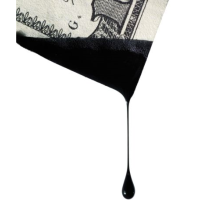Oil Regulator's Report Oozes with Bad News for L.A. and the State

About 75% of California’s oil production relies on injection wells to pump the product and dispose of the toxic waste, often fouling aquifers with little oversight. But as the state rapidly runs out of water, state regulators have been under fire to get a handle on the mess.
Back in 2010, lawmakers told the Division of Oil, Gas & Geothermal Resources (DOGGR) in the California Department of Conservation to send them an annual report on how bad the situation was and what they were doing about it. They published one in 2011 . . . and another one now, along with a mea culpa for being so useless and a promise to do better.
The report (pdf) found that oil companies violated their drilling permits 822 times in 2014 and in 17 cases started their operations before receiving one. Most of the transgressions were dealt with by sending the oil company a notice of violation.
But DOGGR’s internal review was most critical of operations in the Los Angeles basin, where only 22% of drilling operations underwent a mandatory annual Area of Review (AOR). Only five of the projects received a review in the last five years.
Forty-seven percent of files on L.A. drilling were incomplete or nonexistent, and many relied on self-reporting by the oil companies for completion. Testing of the toxic brews injected into the ground to facilitate reaching hard-to-reach oil, and then reinjected as waste water in a separate well, was deemed inadequate.
“Regulators have let the oil industry virtually drill at will in the L.A. area, and those poorly regulated injection wells pose an enormous risk to underground water,” Hollin Kretzmann, a staff attorney with the Center for Biological Diversity, told the San Francisco Chronicle.
DOGGR has survived decades of condemnation for lax oversight, but the dismissal of Conservation Department Acting Director Derek Chernow by Governor Jerry Brown in 2011 for taking a harder line on controversial hydraulic fracturing (fracking) than his boss wanted helped focus public attention on its activities. Chernow and DOGGR chief Elena Miller were fired over their reluctance to grant expedited oil and gas drilling permits.
State officials admitted earlier this year that oil companies had been allowed to inject toxic fluids in or near Central Valley aquifers protected by the federal government. Around 2,500 wells were identified but only 23 were shut down. The state said it did not find any evidence that the aquifers had been tainted.
The wells were identified after the U.S. Environmental Protection Agency (EPA) told state regulators last year that unpermitted drillers, and drillers with permits they shouldn’t have been given by the state, were plentiful. The EPA ordered the state to finally survey its 50,000 injection wells.
“The division hasn't owned up to its responsibility as a regulator in the past,” newly-appointed DOGGR Director Steve Bohlen told the Los Angeles Times. “We are rapidly moving toward doing that.”
The DOGGR report identified “systemic” problems within the division, including insufficient staffing, poor record keeping, a lack of modern data tools and systems, outdated regulations, inconsistent leadership, lack of technical talent and training, and lousy coordination between Sacramento and field offices.
But they’re making a comeback. The Conservation Department and DOGGR have “enacted strategies and activities to address these long–term systemic problems.” Perhaps they will document their success in the next annual report—in 2019.
–Ken Broder
To Learn More:
Oil Companies Violated State Injection Permits 822 Times in 2014 (by David R. Baker, San Francisco Chronicle)
California Oversight of Oil Well Injection Sites Inadequate: State Review (by Rory Carroll, Reuters)
Oil Well Oversight in L.A. Basin Is “Inconsistent,” Audit Finds (by Julie Cart, Los Angeles Times)
State Department of Conservation Director Quits Days after Oil-Drilling RICO Suit Is Filed (by Ken Broder, AllGov California)
Underground Injection Control Program Report on Permitting and Program Assessment (California Division of Oil, Gas and Geothermal Resources) (pdf)
- Top Stories
- Controversies
- Where is the Money Going?
- California and the Nation
- Appointments and Resignations
- Unusual News
- Latest News
- California Forbids U.S. Immigration Agents from Pretending to be Police
- California Lawmakers Urged to Strip “Self-Dealing” Tax Board of Its Duties
- Big Oil’s Grip on California
- Santa Cruz Police See Homeland Security Betrayal in Use of Gang Roundup as Cover for Immigration Raid
- Oil Companies Face Deadline to Stop Polluting California Groundwater





